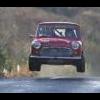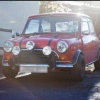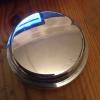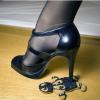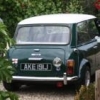
Ball Joints .... What Is 'lapping' ?
#1

Posted 10 October 2011 - 08:58 PM
thanks!!!
#2

Posted 10 October 2011 - 09:23 PM
#3

Posted 10 October 2011 - 09:26 PM
#4

Posted 11 October 2011 - 08:35 AM
#5

Posted 11 October 2011 - 08:44 AM
#6

Posted 11 October 2011 - 08:52 AM
A drill will be applying too much force or more accurately energy, energy conservation rules apply here as anywhere else, this energy will manifest itself as heat in the joint, which will expand the metal parts where it touches, which as you can guess will then sieze and tear the surface of both parts, this is caused by micro welding,
The only way to do this job correctly is by hand. Use a bit of rubber pipe and a stick and apply the same rules as if you where lapping in a valve.
takes time, but is well worth the extra time, this is one of those jobs that 99% of all garages will ignore, so do it yourself or find one of the very few companies that will do it for you correctly.
#7

Posted 11 October 2011 - 08:57 AM
Thanks for this advice
#8

Posted 11 October 2011 - 07:56 PM
#9

Posted 11 October 2011 - 08:33 PM
#10

Posted 12 October 2011 - 03:25 AM
If you do this manually, how long would be enough to be effective?
Don't consider this a function of time or number of turns. Look at the new parts you are installing. Pay attention to the "bottom" of the ball joint stud (the section under the dome nut) and the parts it runs against. Apply the paste, fit the dome nut, and lap the surfaces together using valve grinding paste until all contacting surfaces show a uniform, matte finish. The surface will go from looking smooth and machined to satin like. Unlike lapping valves where you are simply spin the valve back and forth... with ball joints spin the stud back and forth AND tip the joint stud down to different angles in all directions. You are trying to get the the surfaces to be mating spheres.
You can do this with a drill but I found it requires a bit more thought, effort, and homemade tooling. I made a driving "stud" by welding a nut to a rod to hold in the drill chuck. The nut gets screwed onto the ball joint stud so you don't put the stud itself in the drill chuck (this protects the stud and its threads). The hub needs to be held in a vise (not on the car) for lapping. I had already made a holding fixture so I could torque the dome nuts. Most importantly, I found it 100% necessary to hold the dome nut on the ball joint with a long, heavy wrench. While rotating the stud with the electric drill I found I had to continuously adjust the torque on the dome nut. Too much torque and the assembly will seize and the drill is practically ripped out of your hand. Too little torque and you don't lap all the surfaces to each other.
#11

Posted 12 October 2011 - 05:22 AM
#12

Posted 12 October 2011 - 06:46 AM
sorry stupid iphone... i meant with good advice from MRA-minis!!When I did mine (with good advice from mrs-minis!) to check it was lapped in I would clean off all the paste and use a bit of engineers blue, then see if there were any high spots. I then would clean off the blue and apply more paste as necessary!
#13

Posted 12 October 2011 - 07:08 AM
Edited by robtheplod, 12 October 2011 - 07:10 AM.
#14

Posted 12 October 2011 - 10:42 AM
#15

Posted 12 October 2011 - 01:07 PM
1 user(s) are reading this topic
0 members, 1 guests, 0 anonymous users




